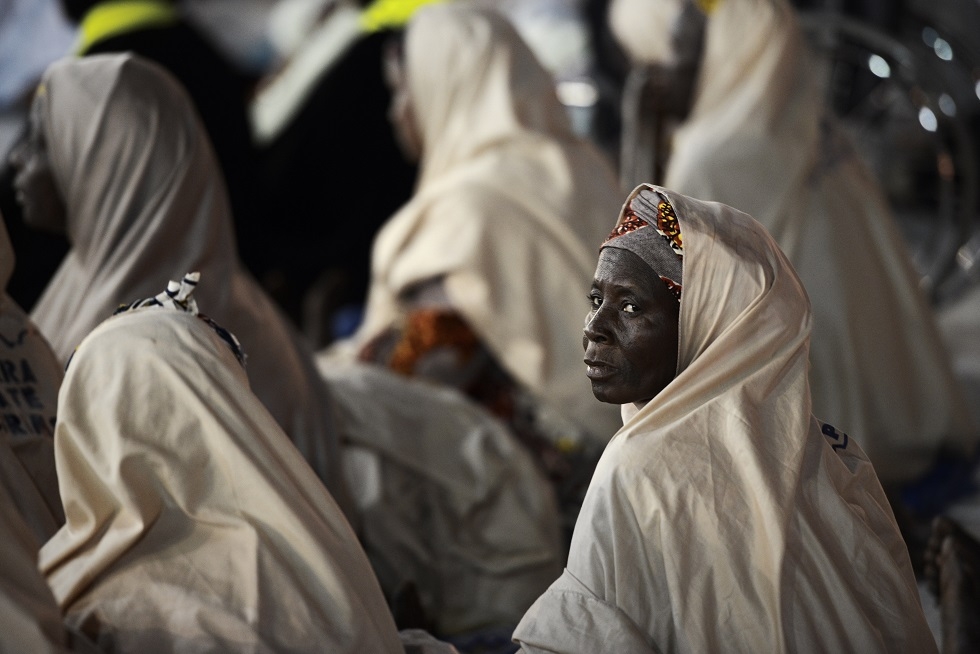Lessons from Hajj: Death, love and unity

The Middle East and the Muslim world of today is one of disunity, occupation, civil wars, extremism, revolutions and sectarianism - the picture is bleak. However, amidst this whirlwind of confusion is a glimmer of hope, an exhibition of unity in the annual Hajj.
In what is perhaps the world’s greatest show of Muslim togetherness, over 2 million Muslims from across the globe will converge this week in Mecca and the holy sites to perform the fifth pillar of Islam. People from the nooks and crannies of the world have already began what is dubbed the journey of a lifetime in the steps of, as Muslims believe, prophets of bygone times in a unified show of solidarity, brotherhood, love, devotion and bearing of difficulties in completing sacred rites.
For Muslims, the Hajj depicts a myriad of emotions, sentiments and affections, including sacrifice, love and unity. Imam al-Ghazali, the great Muslim thinker of the 12th century, writes that this vast throng of people moving and pleading in their numerous tongues with their individual imams, engaged in their own activities, brings to mind the picture of the day of judgement and the afterlife.
This is surely the case. Hajj pilgrims - known as Hajjis - leave their loved ones and homes, undertake lengthy and difficult journeys, and plead and beg to Allah Most High for His favour and kindness. As in the journey of the afterlife, pilgrims move en masse from one place to another - from Mecca to the holy sites of Mina and then to the plain of Arafat where they converge in re-enactment of the day of judgement. From there, they move to Muzdalifah, and then back to Mina and Mecca. All the male Hajjis will be dressed in two pieces of white cloth that reverberate with simplicity and humility, reminding of the shroud Muslims dress their deceased in; this further signals the need to prepare for the hereafter, a time when one and all will stand in front of Allah Most High and account for one’s actions and deeds.
Likewise, the pilgrimage is also an exhibition of love and devotion. The Hajji leaves his home, severs his connection with his family and friends, and goes forth to meet the beloved. Dressed in the simple “ihram” (traditional Hajj dress), his hair dishevelled and covered in dust, the Hajji exhibits a sense of losing his self for the beloved. His love is such that he calls out aloud “Labbayk!” - “I am here!” - a sign of ardent love and enthusiasm. The love then exhibits itself in the rites, the circumambulation of the Kaaba and the kissing of the Black Stone; it is as the Arab poet Majnun said regarding the house of his beloved Layla:
“I pass by these walls, the walls of Layla
And I kiss this wall and that wall
It’s not love of the walls that has enraptured my heart
But of the one who dwells within them.”
The uniform nature of the Hajj further exhibits itself at each and every step of the pilgrimage. The Hajjis represent numerous languages and dialects, nationalities, tribes, colours and social classes - what a great exposition of the cosmopolitan nature of Islam. The Hajjis appear united in their actions and dress in performing the rites of the pilgrimage; their manners and actions obliterate inequality, and demonstrate harmony between Arab and non-Arab, white and black, and rich and poor.
Though the lessons of the Hajj are many, these three symbols are pertinent to the sorry situation of the Muslim world today. We live in times when death and the reality of eventual accountability in the presence of Allah Most High seem distant for many of us. Love and devotion to Allah Most High entails being concerned for the wider Muslim Ummah (collective Muslim community) - a quality that used to be the natural disposition of our illustrious predecessors, particularly our leaders. The absence of these traits means we live in a world today that is fragmented and disjoined along ethnic, sectarian and nationalistic lines. Unity is what is amiss within the Ummah that will exhibit unity of devotion in Hajj.
As the Hajjis pray and supplicate to Allah Most High, I pray that the spirit of love, unity and preparation for the Hereafter (accountability) also rubs on to the wider Ummah to awaken it from its deep slumber.
Ismail Patel is chair of Friends of Al-Aqsa; his twitter handle is @ismailAdamPatel
The views expressed in this article belong to the author and do not necessarily reflect the editorial policy of Middle East Eye.
Photo: Muslim pilgrims arrive for a prayer at Mecca's Grand Mosque on 30 September
New MEE newsletter: Jerusalem Dispatch
Sign up to get the latest insights and analysis on Israel-Palestine, alongside Turkey Unpacked and other MEE newsletters
Middle East Eye delivers independent and unrivalled coverage and analysis of the Middle East, North Africa and beyond. To learn more about republishing this content and the associated fees, please fill out this form. More about MEE can be found here.





